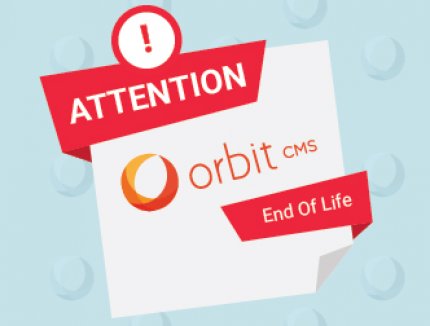BLOG
Why Website Page Speed Matters
And a primer on what to do to improve yours…
Our expectations about how quickly a website should load have changed dramatically over the years. If you were an active internet user in the early 2000’s like me, you can probably remember watching pages slowly load up on your screen, taking several minutes in some cases! You probably weren’t even that concerned about it. Sure, there might have been some finger tapping or distracted glances around the office, but expectations about site loading times were generally pretty low at the time.
All that has changed. Today, website visitors expect pages to load up very, very quickly. Kissmetrics reports that 40% of people will leave a website that takes longer than 3 seconds to load. Furthermore, a whopping 47% of people expect websites to load up in less than 2 seconds. And a 2015 study performed by Microsoft revealed that adults now have an average attention span of just 8 seconds, down from 12 seconds in the year 2000.
Now imagine that a prospective customer has arrived at your website via a search engine. In an ideal world, the site loads quickly, allowing them to whiz through and click that “buy” or “contact us” button. But maybe your site loads too slowly. Instead of sticking around, your prospective customer hits the back button and zooms onto the next site in the list of search results, which just happens to be your competitor’s website. It loads quickly and your prospective customer is now a real customer of another business. Now expand this scenario and imagine it on a nationwide basis. In the United States, for example, it is estimated that slow websites cost the e-commerce market over $500 billion annually!
Source: Kissmetrics
User expectations in a mobile market
Users have even higher expectations about load times on mobile websites. First of all, they do expect that you have a mobile website. This is where a large amount of local searching goes on – users looking for a product or service in a local area where and when they need it. They’re often trying to make a quick decision and they need information to be displayed lightening fast. Take a look at these numbers, as reported by Google:
- 67% of users are more likely to buy or convert after visiting a website that provides a good mobile experience
- 61% of users report that they will “move on” to another site if they encounter a poor mobile experience
- 57% of users will not recommend a business that has a mobile website that provides a poor user experience
- 40% of people would choose a competitor after having a bad experience on a mobile site
A mobile site that loads slowly or does not load at all is the perfect example of a “poor mobile experience”. It’s important to understand that prospective customers are actively seeking out mobile friendly websites and have high expectations of these sites. That’s definitely something to keep in mind when choosing a company to design or redesign your website.
The relationship between page speed and SEO
It’s also important to be aware that a slow website can negatively impact your website’s visibility in the search results. Over the past several years, Google have made a variety of changes to their search algorithm to reward websites that provide a good user experience. One of the more recent changes demonstrates a strong correlation between page speed and page rank (read our post over at Apex Digital on Mobilegeddon to learn more). This year David Besbris, VP Engineering of Google Search, confirmed that “speed has always been a cornerstone of Google Search”.
It’s not just Google that will be punishing sites that load slowly. Facebook recently announced that they are implementing new rules around the load time of advertisers’ websites. While the exact implications to advertisers are not known at this time, it is clear that Facebook is committed to improving the experience of Facebook users across all platforms.
Both Google and Facebook have created tools to help their customers improve site speed and, ideally, attract more customers. PageSpeed Insights is a tool developed by Google that helps developers judge a webpage’s performance so they can make improvements as necessary. Google have also recently announced the Accelerated Mobile Page (AMP) Project, an initiative that aims at improving site speed through the use of AMP HTML, an open framework that will help developers build lightweight pages that load faster. Similarly, Facebook have introduced prefetching, a feature that pre-loads HTML for pages that particular users are likely to click on.
How to optimise site load time
Ok, you get it, speed matters! Now how can you get your website performing better? There are a number of things you can do to optimise page load time. Here’s a taste of some of the most effective and popular methods. We’ll be elaborating on these in a later post, so make sure you check back next month to get more information:
- Use a Content Delivery Network (CDN) to distribute content through a network to ensure the fastest load times possible. At Limelight Online, we have chosen to work with CloudFlare, a leader in global content distribution.
- Minify website files. HTML, CSS and Javascript files can cause a website to load slowly. Minifying involves deleting white space to make the files smaller, allowing the site to load faster.
- Compress all images for web display and ensure that they are being displayed at the correct dimensions. Ideally, individual images would be sized before upload, rather than taking a shortcut and telling the webpage to display a certain dimension. This can take a little bit of back and forth as each image (e.g. photo, logo) needs to be dealt with individually, but it guarantees the best results.
- Eliminate render blocking CSS and Javascript files, which can prevent a page from being displayed quickly. Ideally, your designer and developers would work together to ensure that render blocking files don’t prevent design elements above the fold from loading quickly.
When we build new websites, one of the tools we use is Google’s PageSpeed Insights tool. We use it to test the website during the development phase and continue to make tweaks until an optimal score is achieved. By doing this, we ensure that the website has both a good user experience and the best chance of ranking in Google search. There are a number of other tools that aid page speed that we’ll talk about next time.
How does your website measure up?
If you want to do a quick check on your website in Google’s PageSpeed Insights tool, simply enter a URL from your website and hit the Analyze button. If the page scores less than 85 points, you should consider making changes to improve page load time. If you need help optimising your page speed, we encourage you to get in touch with us. Our specialist team of digital marketers, designers and developers can provide you with invaluable insights into the experience your website provides to prospective customers.









